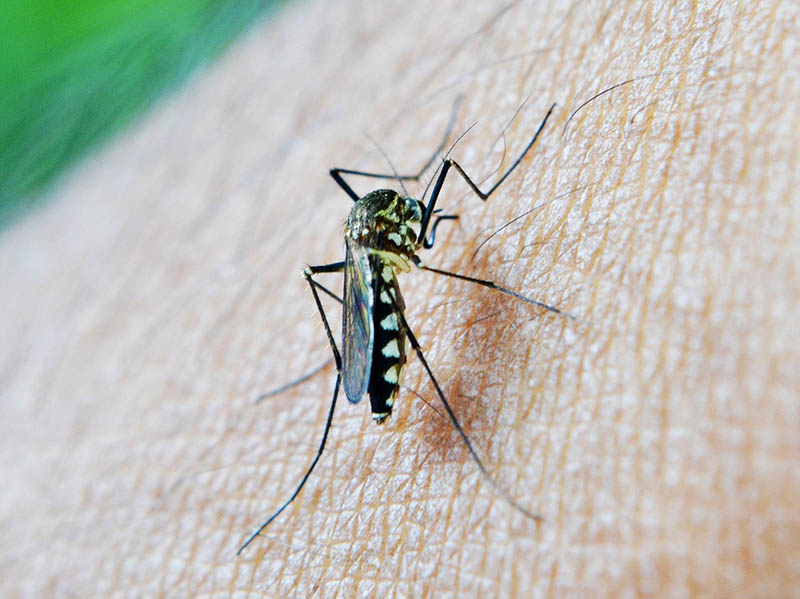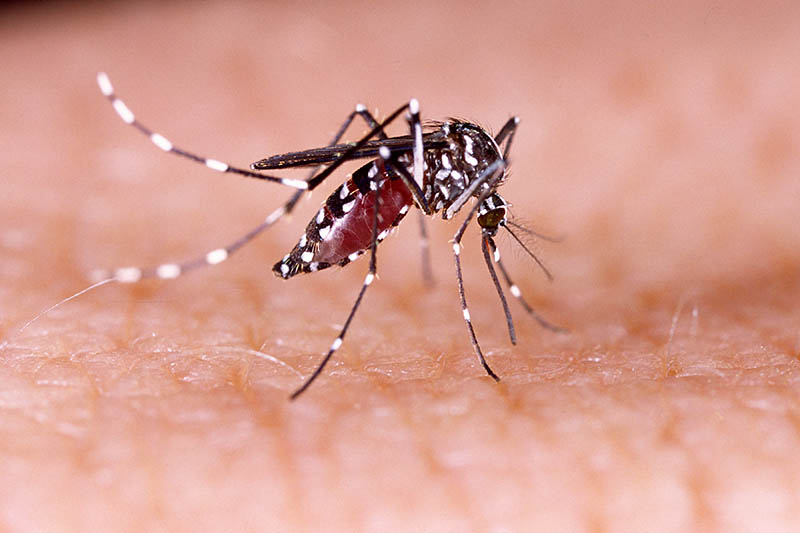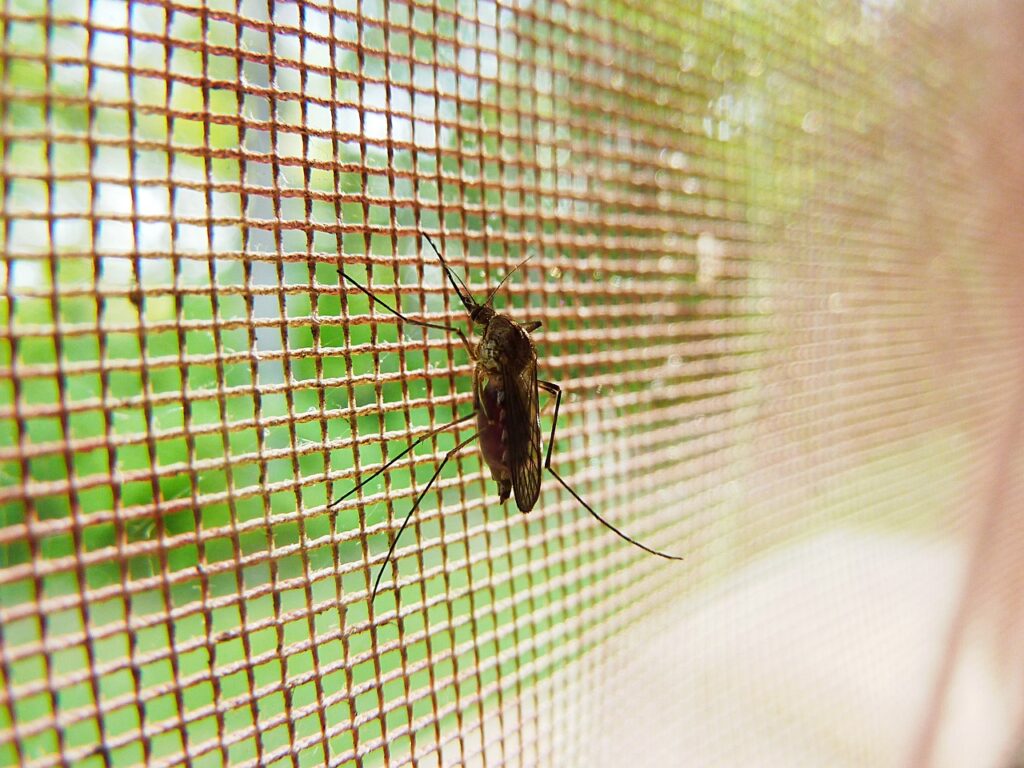4 Types of Mosquitos in Arizona (With Pictures)
-

- Last updated:

Mosquitos are pests that have perfected the art of being a nuisance. Not only are they difficult to catch, but their bite also leaves us itchy and swollen, and they can sometimes even transmit nasty diseases to their unwitting hosts. Mosquitos aren’t just annoying; they are also one of the deadliest insects on earth.
On average, mosquitos kill about 700,000 people a year through their transmitted diseases. While people have a greater fear of sharks, sharks only kill around six people per year in comparison. These deadly little bugs carry diseases like West Nile Virus, Malaria, and Yellow Fever.
Despite its reputation as a dry desert, Arizona is no stranger to mosquitos and the dangers they possess. Annoying mosquitos run as rampant in Arizona as anywhere else in the United States. In fact, Arizona has quite a large number of mosquito species.
The 4 Types of Mosquitos in Arizona
Many people are taken aback by the sheer number of mosquitos in Arizona. While the state is considered dry, the opposite of a mosquito’s ideal environment, Arizona houses over 40 species of mosquitos. While most Arizona mosquitoes are harmless beyond the itchy surprises they leave behind, there are several mosquito species in the state that can still transmit some of the diseases we’ve mentioned. Here are some of the species of mosquitos to watch out for in Arizona.
1. Anopheles Freeborni – The Western Malaria Mosquito

| Habitat: | Semi-arid and arid regions of the United States and Canada |
| Features: | Brown or black bodies with stripes on the thorax |
When it comes to mosquitos, you may be most familiar with the fear of Malaria. And although deaths from Malaria are rarer in Arizona and the United States in total, the spread of Malaria is still possible with these mosquitos. In fact, there was even a Malaria outbreak in California during the 20th century.
Anopheles freeborni are most common in the western United States and Canada, including Arizona. Historically speaking, this mosquito species is the primary transmitter of Malaria in the United States. However, the frequency of this happening is less due to human behavior and overall accessibility.
Anopheles freeborni are medium-sized mosquitos that are typically brown to black in color. Adults also have yellow-brown hairs and brown stripes on their bodies. Their legs are covered in dark scales, but lighter scales break up the pattern at the tip. A unique feature of this species is the tapered scales on the backside of their wings, making them easier to identify.
2. Culex Tarsalis – The Western Encephalitis Mosquito
| Habitat: | Most populations live west of the Mississippi River |
| Features: | Long dark bodies with white banded legs and light stripes on the thorax |
Capable of transmitting both West Nile Virus and Japanese Encephalitis, the Culex tarsalis is the fondest of human habitats. Commonly called house mosquitos, the Culex branch of mosquito encompasses several species that are incredibly similar. This species is found in higher concentrations in locations west of the Mississippi River, with the highest concentration being in California.
Because the Culex mosquito is comprised of multiple species, an adult Culex can be anywhere between 4 to 10 millimeters long. It lacks extra bristles, scales, and other bodily features present in species like the Anopheles freeborni.
The Culex is especially dangerous since it transmits West Nile Virus. West Nile produces typical flu-like symptoms and rare neurological symptoms that can lead to death.
3. Aedes Aegypti – The Yellow Fever Mosquito

| Habitat: | Tropical, subtropical, and temperate regions |
| Features: | Dark brown bodies with black and white-striped legs |
Among the most widespread species of mosquitos worldwide, the Aedes Aegypti is capable of spreading Dengue fever, Zika fever, and Yellow fever. As a nuisance in the United States for centuries, this mosquito is the primary source of Yellow fever—primarily prevalent in South America and Africa.
More outbreaks occur during the summer months, but that does not mean it is impossible to become infected if bitten during other seasons. This species has adapted to be persistent in warm, temperate climates, even in places like Washington, D.C.
You can easily recognize this species by the black and white markings on their legs. In addition, the female mosquitos are larger than the males. However, a male Aedes aegypti’s antennae are more feathery in appearance, but the females have sparse short hairs.
4. Psorophora Columbiae – The Dark Rice Field Mosquito

| Habitat: | Pooled water exposed to the sun in North America and South America |
| Features: | Brown or gray with white scales |
Unlike the previous members of our list, Psorophora columbiae is not a carrier of deadly diseases. However, the Dark Rice Field mosquito is not to be trifled with. This species is known to be aggressive biters and attack in swarms.
A full swarm has been known to kill livestock. They are the most common around sun-exposed water sources, like pooled water in agricultural lands or grassy landscapes. Columbiae is especially common after a good rainfall. They are darker in color than other species, and their bodies have bands of darker color with pale, scaled rings. These pale rings expand into a band on their legs as well.
Protect Yourself
While some species of mosquitos leave us with itchy bites as a painful reminder of their sneaky presence, other species in Arizona can have much deadlier consequences. Mosquitos are adept hunters, and they use a wide variety of methods to find their prey. Some use a special receptor for detecting carbon dioxide emissions, some can sniff out chemicals in sweat, and some sense body heat. However, you can thwart their efforts with the proper precautions.
The first line of defense against mosquitos is a good bug or mosquito repellent. When looking for mosquito repellent, you want to use ones containing DEET, lemon oil, and eucalyptus oil. You should use an EPA-registered repellent, like OFF!, as these products have been evaluated and tested for safety and overall effectiveness. Other prevention methods, like essential oils, are not regulated by the EPA and therefore have questionable effectiveness.
A second line of defense is to cover your skin. While it may not seem like the best idea to wear long sleeves and pants in Arizona, wearing a lightweight cover can protect you from mosquitos even more. With less of your skin exposed, mosquitos will struggle to find a suitable landing spot for their next meal.

Protect Your Home
When considering mosquito prevention, don’t forget your home. While it may seem logical to protect yourself outdoors, preventing mosquitos indoors is equally important. All species of mosquitos use water to lay eggs.
Mosquito larvae mature in that water before they emerge and terrorize the world around them. Standing water and moist areas around your home can become a vile breeding ground for these pests. Some of the most common trouble spots around your home include:
- Any open containers of standing water
- Damp plant material trapped in gutters is a perfect place for mosquitos to nest and lay eggs
- Leaky faucets should be fixed to prevent mosquitos nesting in your pipes
- Uncovered garbage containers can attract mosquitos
- Any uncovered items capable of gathering and holding water, even garden gnomes
- Broken, ripped, or nonexistent window screens should be fixed or replaced as an extra layer of protection from outdoor assaults
Final Thoughts
Arizona is home to over 40 species of mosquito, all of which are annoying and some of which are deadly. Looking for a single solution to eliminate them or the risk of running into them is a staggering task. When exposed to mosquitos, your best solution is to bring repellent and wear extra clothing. Mosquitos will always pose a threat, but proper preparation can keep you healthy.
See also: What Is the State Insect of Arizona? How Was It Decided?
Featured Image Credit: mikadago, Pixabay
Contents

